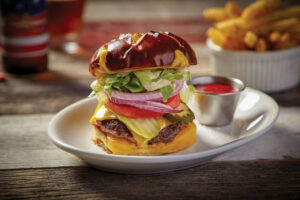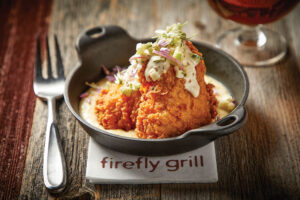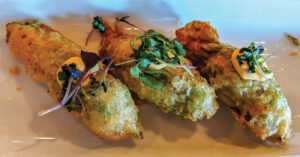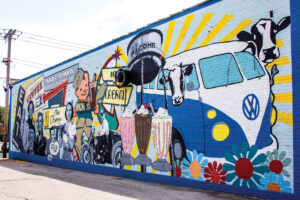What diners can expect on the menu at Firefly Grill is local, sustainable and honest, as well as some great food.
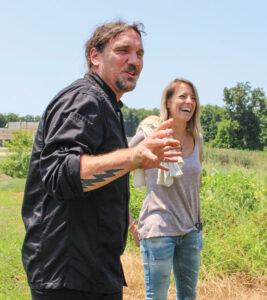
Chef Niall and Kristie Campbell have blended their experiences from Illinois, Maine, Puerto Rico, Alaska and San Francisco to create an eating destination that’s the sum of its parts: gardens, irrigation, cover crops, mulching, plot rotation and a look to the future with hoop houses and a small wagyu cattle herd for a uniquely local eating experience.
Chef Niall stresses the restaurant is “not farm to table. We are farm and table.”
Yet it was a combination of family roots and a request that landed them in Effingham. While Kristie spent time with her grandparents in Effingham, it was Jack Schultz of Agracel, a commercial real estate firm, and others who asked them to open the fine dining restaurant around 2006, well before the farm-to-table trend and “have a place to recruit quality people to our community,” Kristie explained.
“You don’t say no to that kind of opportunity,” Niall said.
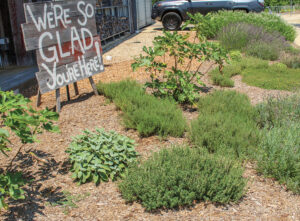
Walking up to the front door says plenty about the eatery before one can sit down with a menu. The exterior is surrounded with garden plots and that’s reclaimed and reused barn wood and galvanized metal constructing the building’s exterior shell.
Some of Kristie’s fondest memories are the trips to her grandparent’s home in Effingham and catching fireflies in their backyard. A picture of her late grandmother, Lucille Samuel, hangs in the dining room.
Why garden plots? Niall and Kristie recalled the process to get fresh tomatoes, peppers and herbs to the Vieques island restaurant, off the coast of Puerto Rico. They had to drive to the San Juan airport to pick up crates of fresh produce from the U.S. mainland and then drive back to Vieques via ferry.
“It was ridiculous. We had a lot of sun there. It’s hard to get fresh herbs on islands and we started growing herbs ourselves,” Niall said.
“Let’s not kid, a tomato you grow versus a tomato you purchase is a totally different experience,” Kristie added. “We want that for our customers.”
More than a half dozen gardens surround the restaurant, including an herb patch at the front door and a raised bed garden that’s filled with 30 or so heirloom tomato varieties.
They also have plans for more garden space, an orchard and a small wagyu cattle herd at their 12-acre residential property.
As small specialty farmers, the Campbells are essentially organic growers but without “all the paperwork, cost and government involvement” of USDA certification, Niall said. Making the biggest impact on their plots is the use of mushroom compost to rebuild their soils and planned vegetable rotations to limit disease and rebuild soil nutritive value.
The restaurant was named in 2008 by Bon Appétit magazine as the second-best eco-friendly restaurant in the nation. “We don’t do it for the sake of being green. We do it because they are smart decisions,” Kristie said.
At the core of Niall’s creative process as a chef is his ability to adapt to what’s going on with the farmers.
“(Restaurants) are used to trucks just showing up and bringing boxes in perfect squares that fit into your walk-in (cooler). It’s really about working with the farmers” he said.
“You have to make a commitment to this kind of food as guarantee of quality and taste. Everyone fights for the bottom line. We spend more time working on doing the right thing and the bottom line ends up hashing out anyway. Yes, it’s more work but it’s worth it.”
What this means for diners is a seasonal menu that regularly changes with fresh ingredients. It also means that Niall tends to think about menu six months in advance. “The fact that we’ve added a whole different element to it with the farm and the garden, is really fun. I’m thinking about spring and summer in January as we’re buying seeds,” Niall said.
Among the restaurant’s mainstay menu items are fried green tomatoes, Montana mignon, caprese salad and squash blossoms as well as a fall display of pumpkins, squash and gourds that shrinks as diners enjoy their dishes.

